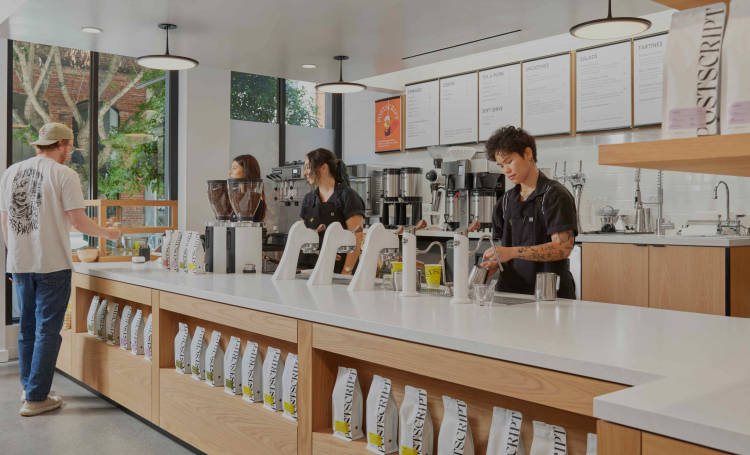
Taking full control of and directing your brand – from its big theme to its composite parts to the fine details, like your slogan – is one of the major considerations for any new company executive. But brand positioning is uniquely complex and tricky to nail down.
What exactly is brand positioning, and how can we help you leverage it to boost your company’s sales volume or consumer retention?
What Exactly Is Brand Positioning?
If brand is the composite reputation, unique selling point, and recognition of your customers, the thing that you use to inform all of your business decisions, then brand positioning is the way that your brand takes up space.
Brand positioning can be thought of as the way you distinguish your brand from all of your competitors or from similar companies. But brand positioning also covers how people think of your brand, ranging from whether or not they believe your brand to be positive to the environment to whether they believe your brand as premium or luxury, and so on.
Put another way, brand positioning is placing your brand within consumers’ ideas of your industry or niche in the most advantageous place possible. It’s about what they associate you with.
Here’s an example of great brand positioning:
Dove produces body care products, specifically body soap. This is obviously a pretty saturated market.
This brand positions itself as not only gentle and safe for all skin types, but as something that will enhance natural beauty.
Based on their brand positioning, customers think of Dove as inclusive, natural, and safe, which has built them a loyal following.
Now that they’ve taken up that position, it’s all but impossible for competitors to steal it from them.
How Does That Compare To Brand Awareness?
Brand positioning is related to brand awareness, although the two topics are still distinct. Brand awareness is a measure of how many people know about your brand or how close they connect your brand to the service you offer. For instance, Coca Cola has very high brand awareness as many people associate Coke with soda in general rather than just their primary soft drink.
Brand positioning is how your company is perceived within the context of your industry. Brand awareness is the act of signaling to potential customers and members of your industry how you are positioned.
Why Does Brand Positioning Matter?
How you position your brand within the market is how you build a defensible strategy for the business. It is how you will be perceived by potential customers, competitors and allows them to categorize your brand within their mind.
Brand positioning:
Shapes customer preferences. If you position your brand successfully relative to your competitors, customers will eventually begin to prefer what you offer instead of what your competitors do. This can only be good for your business.
Boosts consumer loyalty. Once you take up a particular position in your industry, your brand will become identified with certain attributes. Do this with positive attributes, and your consumers will be more fanatical than ever. They’re buying the beliefs that they associate with you, rather than the actual products, and that’s what you want.
Improves your brand’s perception. With successful brand positioning, you can associate your brand with positive aspects or attributes, such as environmental friendliness, affordability, customer-first focusing, and more. All of this will improve how people look upon your brand and make it more likely that they’ll spend their money with you.
Because of all these potential benefits, growing companies would do well to invest in brand positioning agencies and spend some time getting it right.
How To Determine Brand Positioning For Your Company
Even new companies can take immediate steps to determine and perfect brand positioning for themselves, especially with some help from us. Let’s break it down step-by-step.
Determine How Your Company Is Distinct From Competitors
First, it’s important to think about how your business or company is distinct from your competitors. Practically every business that succeeds has a USP or unique selling point. You need to identify this USP and lean on it hard. In crowded business environments (like most industries these days), the difference really comes down to the details when consumers need to choose between your product and a very similar one offered by a competitor.
For example, Death Wish Coffee is a company that creates coffee that emphasizes not the taste or smoothness of the coffee, but the fact that it’s the strongest on the market. This distinguishes them from their competitors and will draw a very specific kind of customer—the coffee addict.
Or you can consider a company like Dollar Shave Club. This brand took an everyday activity and found their spot in the market by creating a personalized service that delivers shaving products to your door, setting it apart from the giants that line the drugstore shelves. They made a boring, every-day action into an experience.
Bottom line: do some hard thinking and determine why your company is unique compared to your closest competitors.
Highlight What Your Brand Provides
It’s also a good idea to highlight what exactly your brand provides especially when connecting with an agency like us at Herman-Scheer. You should’ve already done this when creating your company in the first place, but in case you haven’t:
Identify any customer pain points that you can solve. Most products or services do this inherently since they have to provide some value to their consumers to be worth their money. Clothing solves a clothing need, music streaming platforms serve consumers that want to listen to music easily without having to buy individual discs or songs, etc.
Determine how your company provides your services or products. The exact way you do this will impact your brand positioning, as you may create your products or services with eco-friendly methods, with certain focuses on genres or styles, etc.
Figure out how to explain to your target or ideal consumer how you provide these benefits.
Brand Positioning Statements
That leads to the next big part: brand positioning statements.
In brief, a brand positioning statement is any description to your target market that can, at least in part, provide a picture of what your brand represents and how it does so—and make sure that you can back it up. This is incredibly subjective, but ideally, the brand positioning statement will result in your brand being positively perceived by your target customers.
This all contributes to brand identity, which you can use to inform your business strategy overall.
Examples Of Excellent Brand Positioning
Let’s take a look at some examples of fantastic brand positioning we can see in the marketplace today.
One good instance is Tesla: Elon Musk’s car company. The Tesla brand is designed from the ground up to be luxurious and futuristic and to appeal to educated shoppers looking to feel better about their consumption habits.
To this end, Tesla’s cars are electric, high-tech, and pricey. But everything in the brand, ranging from the font to the advertising from the very aesthetics of the cars themselves, is designed to reinforce this brand positioning. Now no one else can beat Tesla at this game – they’ve cornered this particular section of the car market for themselves.
Apple is another great example. It’s come a long way from its beginnings as the first producer of home computers. Now, with Microsoft dominating business environments, Apple has positioned its brand to be the “cool” or “artsy” counterpart to Microsoft’s business-suit-appropriate brand style.
This has resulted in Apple computers and products being particularly popular with college students and artistic types.
One last example is Trader Joe’s: a popular US grocery store chain that actually comes from a German parent company! This brand has distinguished itself and positioned itself as a kind of “corner store” grocery store chain that offers a smaller, down-to-earth shopping experience compared to premium food providers, such as Whole Foods.
Their positioning is reflected both in their relatively affordable prices and their aesthetics – the employees all wear nautical themed apparel, and the stores themselves are decorated to resemble the trading deck of an old seafaring ship.
Summary
All in all, brand positioning is just one more aspect of brand management and cultivation that you’ll need to master if you want your company to succeed. Fortunately, brand agencies like us at Herman-Scheer are great resources if you need help positioning your brand for maximum success.
Contact us today and see what we can do for you!
Sources
https://www.forbes.com/sites/jerrymclaughlin/2011/12/21/what-is-a-brand-anyway/https://www.forbes.com/sites/larrylight/2020/07/27/teslas-brand-believers/












